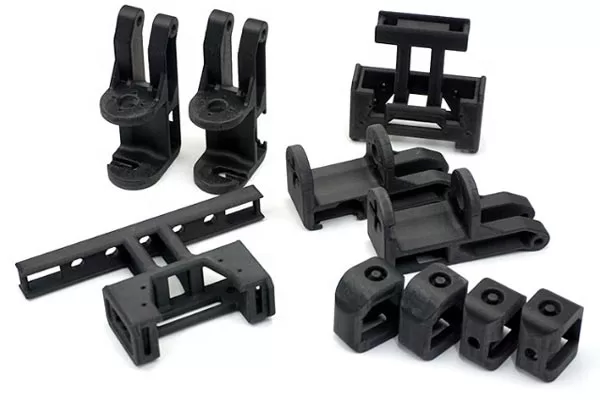Rapid tooling has an undeniable role in the prototyping process. Without rapid tooling, product designers will not be able to make multiple prototypes in a fraction of the time it would take to make them with conventional tooling techniques.
For many businesses, inventors, and entrepreneurs, rapid tooling is the best way to create products from scratch. To benefit from the advantages of this technique you need to know the right rapid tooling technique to use. Read this article to know more about the rapid tooling techniques used in many industries.
Indirect Rapid Tooling
There are two broad categories of rapid tooling: direct and indirect. The direct approach is where the rapid tooling machine builds the actual core and cavity mold inserts while the indirect uses master patterns to produce a mold.
Several pattern-based tooling applications can be used to create mold faster with varying costs, process capabilities, and lead time. The accuracy of this process will depend on the accuracy of the process to create the pattern.
RTV Silicone Rubber Molds
One of the most popular rapid tooling techniques is the production of room temperature (RTV) silicone molds. The process involves making the master pattern, finishing the pattern to the desired appearance, and casting silicone rubber around the pattern to form the mold. This process is fast, inexpensive, and offers high fidelity and the option of using different materials.
Vacuum Casting
Plastic parts made from vacuum casting are done by using a silicone tool in a vacuum chamber with polyurethane resin. This resin is mixed and de-gassed before pouring into the silicone cavity. After pouring, the vacuum is released and the tool is removed to a post-curing oven. After an exothermic reaction, the cavity is opened and the polyurethane part is removed.

Vacuum casting parts
RIM
As opposed to vacuum casting, the reaction injection molding process does not rely on expensive chambers and mixing units. This process employs a simple resin injection system with two pressurized chambers. With an injection nozzle, the silicone tools are filled at atmospheric pressure until the excess resin is forced through a series of homes. There is no thermal cycling and the curing time is faster than vacuum casting.
Wax Injection Molding
Aside from the two-part resin molding, the silicone mold is also suitable for low-pressure injection molding of waxes. With a low-pressure injection system, the semi-molten is forced into the silicone cavity until full. The wax is then removed from the cavity and the process is repeated,
Spin-Casting
Another interesting application of rapid tooling is spin casting. The tool used in this process is made from vulcanized rubber with several models located in disc-shaped tools. It will rotate to fill the cavities while the centrifugal force pressurizes the cavity,
Cast Resin Tooling
It is the most economical and simplest method of producing a tool to be used in injection molding of thermoplastic parts. It has a molding pattern within the mold box. The process involves setting up a parting line, painting, and pouring resin over the pattern until it is filled up. The resin often has aluminum powder or pellets to improve the thermal conductivity and compression strength of the tool and reduce the cost of the resin.
Spray Metal Tooling
This method is used in the production of soft tooling. It involves spraying a thin shell over a pattern and backing this with epoxy resin to provide rigidity. Spray metal tooling is often used in a variety of applications including sheet metal forming, injection molding, compression molding, blow molding, and others.
Sprayed Steel
This process is similar to traditional sprayed metal tooling, the only difference is in the mechanization of the process as there are multiple spray heads involved. The process creates much harder tools and is, therefore, more useful than traditional sprayed metal tooling.
Plaster Molds
Plaster mold casting is applied to simulate die-casting. Although this process has several variations, it all starts with the master shape of the die-casting. The silicone rubber is molded over the master and another silicone rubber is molded over the first. The first is the replica of the original model while the second is for the plater cavity. Metal is poured over the plastic cavity and after it solidifies, the plaster is broken away.
Electroforming
The process involves electroplating a thick sheet into a master pattern, before it begins, the surface should be electrically conductive. This is achieved by spraying a conductive lacquer over the model. After plating, the shell is removed and then backed with a suitable material. Electroforming is used to produce tools for shoe soles with complicated patterns.
Conclusion
There are remaining indirect rapid tooling methods available. Most of them require a master pattern. Although many new techniques are coming out that do not require one, indirect RT methods will flourish because they are the most developed.
